Torticollis Neck Pain! What Is This Neck Pain?!
Clear Lake Chiropractor Comments: “When I woke up this morning, I couldn’t move my neck! Every time I try to move it, I feel sharp pain on the left side of the neck shooting down into the shoulder blade. It just came out of nowhere!”
Chances are, you are suffering from a common condition called torticollis – which is a typical neck pain which can be treated with chiropractic treatment, which literally means, “twisted neck” after the Latin terms of “torti” (twisted) and “collis” (neck). The common name for this is “wry neck,” and it’s basically a painful muscle spasm, like a “Charlie-horse” but located in the neck muscles. Usually, a person wakes up in the morning with this and the cause is often related to sleeping with the window being open or a fan or air conditioner blowing on you. It can also relate to a “cold settling in the muscle” after a cold or flu virus. Trauma such as falling or a car accident can also cause torticollis. However, most of the time, patients with torticollis are not sure what caused the abrupt onset of symptoms.
Usually, torticollis will gradually improve over a 2 week time frame. However, it only takes a few days to a week (at the most) if you receive chiropractic adjustments. Most importantly, without treatments, the sharp pain can last a week and can severely limit your activity, often prohibiting work as well as your desired “fun” activities. Hence, most people prefer having this treated as opposed to “waiting it out.” In some cases, it can last longer than a month and in rare cases even longer, so getting this treated is highly recommended. Also, try to get in for a treatment immediately before the muscle spasm really sets up. We find this to be the most effective approach. Here are a list of symptoms and treatment suggestions for torticollis:
Acute Torticollis Symptoms
- Muscle spasms
- Neck and shoulder pain
- Neck and spine contortion (neck twisted to right or left side of body)
Pain Relief Treatments for Acute Torticollis
- Chiropractic neck and spinal adjustment
- Analgesics
- Hot / Cold packs
- Muscle relaxants
- Rubs and ointments (Icy Hot, BioFreeze)
- Massage with essential oils
- Sleep / Relax
- Supportive cervical collar
If you, a family member or a friend require Torticollis care, we sincerely appreciate the trust and confidence shown by choosing our service. We are proud that chiropractic care has consistently scored the highest level of satisfaction when compared to other forms of health care provision and we look forward in serving you and your family presently and in the future.
Dr. Ward Beecher practices at Beecher Chiropractic Clinic at 1001 Pineloch, Ste 700 Houston, TX 77062. You can schedule an appointment at BeecherChiropractic.com or by calling (281) 286-1300. If you have any questions regarding this blog, please comment below!
Low Back Pain: Prescribed Medications vs. Spinal Manipulation
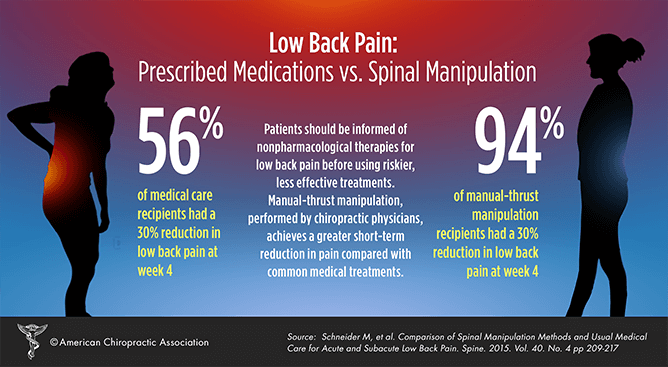
Low Back Pain: Prescribed Medications vs. Spinal Manipulation
Patients should be informed of nonpharmacological therapies for low back pain before using riskier, less effective treatments. Manual-thrust manipulation, performed by chiropractic physicians, achieves a greater short-term reduction in pain compared with common medical treatments.
56% of medical care recipients had a 30% reduction in low back pain at week 4.
94% of manual-thrust manipulation recipients had a 30% reduction in low back pain at week 4.
If you would like to no more about manual-thrust chiropractic back manipulation for low back pain, please contact Dr. Beecher at Beecher Chiropractic Clinic in Houston Texas!
Source: Schneider M. et al. Comparison of Spinal Manipulation Methods and Usual Medical Care for Acute and Subacute Low Back Pain, Spine 2015. Vol. 40. No. 4 pp 209-217.
Backpack Safety Checklist From Your Houston Chiropractor!
In 2013 alone, the U.S. Consumer Product Safety Commission cited 5,415 backpack-related injuries treated at emergency rooms. Doctors of chiropractic (DCs) point to the dangers of heavy backpacks, resulting in injuries ranging from acute and chronic back pain to other painful conditions.
The American Chiropractic Association (ACA) recommends that parents choose the right backpack (see list below) and then help their children pack them properly, leaving out unnecessary items to insure they weigh no more than 10 percent of a child’s body weight.
- Is the backpack the correct size for your child?
- Does the backpack have padded shoulder straps for comfort?
- Are the shoulder straps adjustable?
- Does your child use both straps?
- Does the backpack have a padded back?
- Does the backpack have compartments to keep contents in place?
Are you concerned for the back health of your child? Houston chiropractor – Dr. Beecher of Beecher Chiropractic Clinic can help you and your child!

Why Is My Back Always Hurting?
Houston Area Chiropractor Comments: Low back pain is a very common problem affecting 80-90% of all of us at some point in our lifetime. Why is that you ask? There are many reasons. One of the biggest reasons is that we are 2-legged animals carrying 2/3rds of our weight above our waist. Studies have shown deterioration or arthritis occurs much sooner in us vs. our 4-legged animal counterparts. A 180 lbs man carries roughly 120 lbs above the waist. This means, every time he bends over, in order to stand upright, he needs to lift 120 lbs PLUS whatever he is lifting. Hence, the argument of, “…but I only bent over to lift a pencil and my back went out,” seems on the surface as impossible but in reality, the man in our example is lifting the pencil plus 120 lbs. Now, let’s add to that the point that a 5 pound weight equals 50 pounds when held out in front with the arms stretched out straight. Now, if that’s not bad enough, now, let’s assume all of this is happening from a bent forward position, with a twist at the waist, with out stretched arms, while lifting a 20 pound object. Get the idea? It’s amazing our back doesn’t get injured every day as we lift 2 bags of groceries into the far end of a car trunk, or, when lifting our 30 pound child in and out of a car seat, height chair, or when they are screaming and pushing away from us as we try to lift them!
In order to further appreciate why the low back is so vulnerable to injury, some basic understanding of anatomy is needed. When we’re born, the back is made up of 33 segments of which 5 fuse by the time we’re about 18 years old to make up the sacrum (bottom of the spine) and 4 fuse to make up the coccyx (tail bone), leaving 5 lumbar (low back), 12 thoracic (mid-back) and 7 cervical (neck) vertebra. These are stacked up on top of each other like building blocks and are connected to each other by a shock absorbing disk in the front and two smaller facet joints in the back, acting like a tripod. In the low back, we’re supposed to bear about 80% of our weight in the front and 20% in the back but, if our abdominal muscles are a bit out of shape and the pelvis rotates forwards, the curve in the low back increases and overloads the back of the vertebra (facets) making them vulnerable to injury. The disk becomes injured when we bend/lift/twist. This can tear the outer tough fibers of the disk, allowing the central more liquid-like material to leak out. If this happens, the leaking or “herniated” disk can put pressure on the nerve that exits the spine and travels down our leg. If the pain pattern includes the back of the leg, it’s commonly referred to as “sciatica.”

OK, enough about anatomy. What can we do to reduce the chances of having periodic low back pain? Obviously, staying in shape is very important. Certain muscles of the body must be tight to keep us upright or standing. These muscles need to be stretched on a regular basis. For example: the hamstring muscle. We’ve all had to perform hurdler types of exercises and remember how tight they feel!
We realize that you have a choice in where you choose for your healthcare services. If you, a friend or family member requires care for low back pain, we sincerely appreciate the trust and confidence shown by choosing our services and look forward in serving you and your family presently and, in the future.
Dr. Ward Beecher practices at your local Houston chiropractor – Beecher Chiropractic Clinic at 1001 Pineloch, Ste 700 Houston, TX 77062. You can schedule an appointment or call (281) 286-1300. If you have any questions regarding this blog, please comment below!
Back Pain? Consider Chiropractic!

Back Pain? Consider Chiropractic!
According to a new study published in the Journal of the American Medical Association (JAMA), spinal manipulation is associated with statistically significant improvements in pain and function for up to six weeks with serious or adverse side effects.
If you are interested in spinal manipulation in Houston, consider calling your Houston chiropractor – Beecher Chiropractic Clinic.
Types of Headaches
Clear Lake Chiropractor Comments: Headaches are one of the most common complaints for which patients seek chiropractic care. Chiropractic is especially helpful in the treatment of headaches because the three nerves that exit the top of the spine (upper neck) are often the cause of or directly related to headaches. These three nerves travel into the head and have to pass through a very thick group of muscles in the upper part of the neck near where these muscles attach to the base of the skull. This is why when you have headaches and rub the back of the neck, the muscles may feel tight and or tender. In fact, if enough pressure is applied over one of these three nerves, pain will radiate into the head following the course of the nerve, sometimes all the way into the eyes. When chiropractic headache treatment is applied in the upper neck region, a reduction of the headache and neck pain occurs because the muscle tension is decreased and joint motion is restored.
The International Headache Society (IHS) has classified headaches into two main categories, primary and secondary. Primary headaches occur for no known reason and there are four groups of these: 1) migraine, 2) tension-type, 3) cluster, and 4) “other” primary headaches. Secondary headaches are those with a specific cause such as sinus/allergy headaches, those associated with eye strain, a known medical condition or those due to cold or flu. Both migraine and cluster headaches are “vascular” (related to the blood vessels expanding inside the head) resulting in a unique set of symptoms that includes nausea, vomiting, pounding/throbbing and can be quite debilitating.
The most common type is the tension-type of headache. A thorough history is necessary because there is no specific diagnostic test (lab or blood test) for tension-type headaches. Hence, the concept is to make sure the headache is not related to some other condition that is diagnosable by a blood or lab test and if present, having that condition properly managed. So, assuming all the tests come back “normal” and all other causes have been eliminated or “ruled out,” the most common type of tension-type headache is “episodic” or, occurs off and on, lasting minutes to days. The pain is usually described as, “…my whole head hurts.” There is typically tightness or tension (NOT throbbing) described in the neck muscles and the intensity ranges from mild to moderate, not usually severe, where laying down is needed. Physical activity does not usually make it worse and there is no sickness to the stomach (nausea/vomiting), and no intense reaction to bright lights or noise (like there is with migraine & cluster types of headaches). There are sub-types of tension headaches that can occur simultaneous with migraines headaches, but the classic “aura” (a before the headache warning associated with migraine headaches) is usually not present.
Chiropractic treatment typically includes manipulation and mobilization of the neck, muscle release techniques, physical therapy modalities like electric stimulation, ultrasound, and others, exercise, stress and diet/nutritional management.
If you, a family member or a friend require care, we sincerely appreciate the trust and confidence shown by choosing our service. We are proud that chiropractic care has consistently scored the highest level of satisfaction when compared to other forms of health care provision and we look forward in serving you and your family presently and in the future.
Dr. Ward Beecher practices at Beecher Chiropractic Clinic at 1001 Pineloch, Ste 700 Houston, TX 77062. You can schedule an appointment at BeecherChiropractic.com or by calling (281) 286-1300. If you have any questions regarding this blog, please comment below!
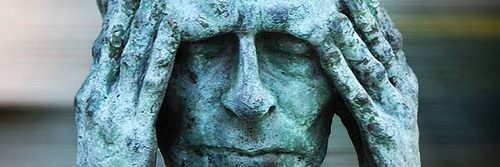
Reduced Medicare Costs with Chiropractic
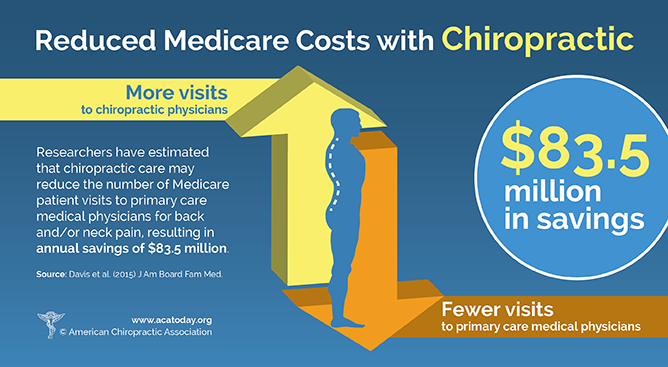
More visits to chiropractic physicians and fewer visits to primary care medical physicians can lead to $83.5 million in savings.
Researchers have estimated that chiropractic care may reduce the number of Medicare patient visits to primary care medical physicians for back and/or neck pain, resulting in annual savings of $83.5 million.
Source: Davis et al. (2015) J Am Board a Med.
If you are experiencing neck pain or back pain in Houston while on Medicare, using a chiropractor to treat these conditions could save you money!
Chiropractic Care for Older Medicare Patients
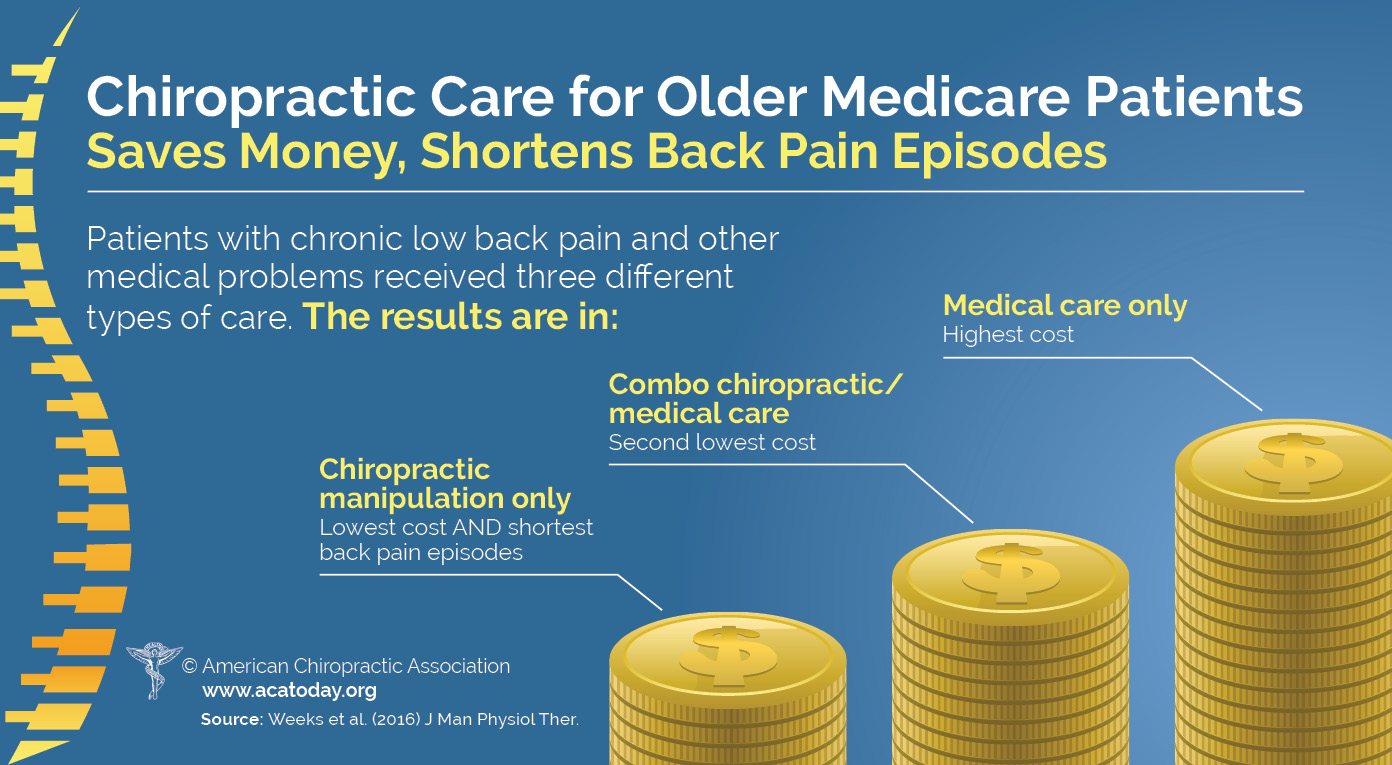
Saves Money, Shortens Back Pain Episodes
Patients with chronic low back pain and other medical problems received three different types of care. The results are in:
Chiropractic manipulation only: lowest cost and shortest back pain episodes
Combo chiropractic & medical care: second lowest cost
Medical care only: highest cost
If you want to lower your healthcare costs and also shorten your pain episodes, call your local Houston chiropractor now! We can help shorten your experience with back pain in Houston and neck pain.
Can Whiplash Affect My Memory?
Houston Chiropractor Comments on MTBI:
This is a common complaint we hear as a Houston chiropractor occurring as a result of a whiplash injury, but it’s not commonly known, leaving those who are suffering wondering, “…what’s wrong with me?” Whiplash is an injury that classically occurs as a result of a car crash at any speed, even at low speed! This is because at low speed, there is little to no damage to the car, and the forces from the crash are not absorbed by the crushing metal. As a result, those forces are transferred to the contents inside the car – that is, the passengers. This sometimes results in a significantly greater injury compared to crashes that occur at twice the speed because the latter results in crushing metal. The actual injury that occurs in whiplash is caused by the sudden, rapid movement of the head resulting in varying degrees of injury to the neck, as well as to the contents inside the skull – that is, the brain. The brain literally “bangs” into the inside walls of the skull when the head is rapidly accelerated during a car crash. The resulting injury is a concussion. What’s interesting is that most patients injured in a car crash often don’t mention a concussion nor is it usually asked about at the doctor’s office as other, more obvious injuries are dwelt with. The condition is usually referred to by one of two names: post-concussive syndrome or mild traumatic brain injury (MTBI).
Suffering From Whiplash and MTBI
This can be very embarrassing, frustrating, and scary for patients suffering with MTBI. Other symptoms associated with this include difficulty in focusing (blurred vision), headaches, having difficulty in pronouncing certain words (“tongue twisted”), having difficulty in understanding what was said, difficulty remembering numbers or groups of numbers like phone numbers, addresses, birthdates, and so on. These symptoms can range from mild to severe and can be very disruptive, making work and everyday tasks challenging.
How long does it last? MTBI can completely clear up in 2 to 6 months without problems or, it can hang on for 2 years or longer, and may even become a permanent residual from the car crash. In one study, continued problems after a 2 year time frame were reported in close to 20% of those injured 2 years earlier. This study suggests that about 1 out of 5 may continue to suffer with MTBI and the associated brain-related problems for at least 2 years following a car crash. However, another study reported the long term “higher cognitive function” (such as the ability to communicate through written or spoken language) is usually not affected by whiplash injuries. However, they preface that with by reporting that a more commonly injured group with more mild brain problems was found.
As chiropractors, we are trained to do a thorough history, orthopedic and neurological examination, and ask specific questions about mild traumatic brain injury. It is important to discuss this information with those suffering from whiplash injuries as frequently, MTBI patients think something is “…seriously wrong” and harbor unnecessary anxiety.
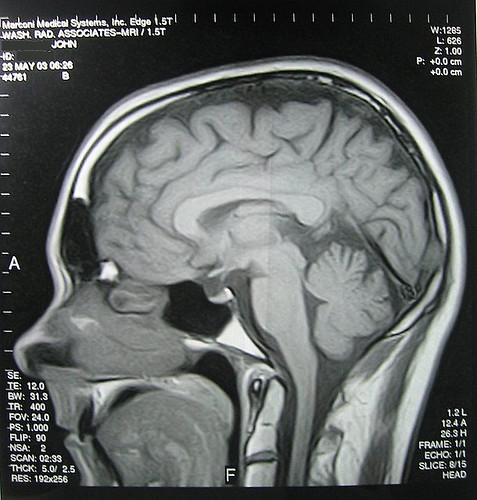
We realize that you have a choice in where you choose for your healthcare services. If you, a friend or family member requires care for MTBI whiplash, chiropractic rehabilitation & care is a logical first choice and we would be honored to offer our services to you.
Dr. Ward Beecher practices at Beecher Chiropractic Clinic at 1001 Pineloch, Ste 700 Houston, TX 77062. You can schedule an appointment at BeecherChiropractic.com or by calling (281) 286-1300. If you have any questions regarding this blog, please comment below!
Chiropractic and Opioid Prescriptions

More doctors of chiropractic (DCs) could mean fewer opioid prescriptions for younger Medicare beneficiaries.
Higher number of DCs per capita is strongly correlated with a lower proportion of Medicare patients who fill opioid prescriptions. If you currently have back pain, neck pain, or need a chiropractic care in Houston, please consult with your local Houston chiropractor – Dr. Beecher. Natural solutions can be had like chiropractic for opioid prescriptions.

